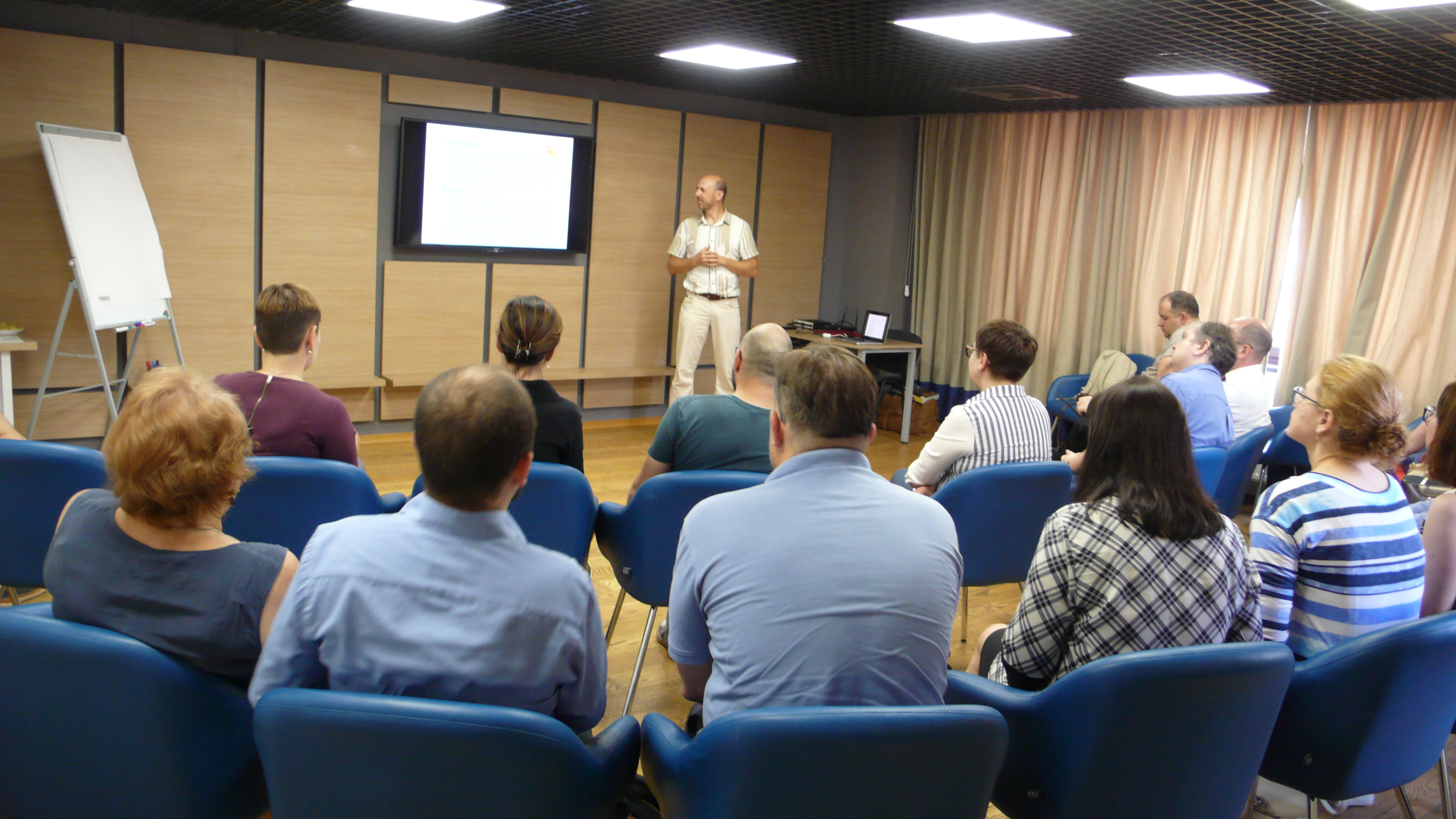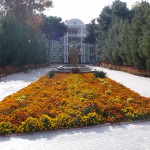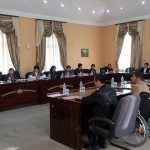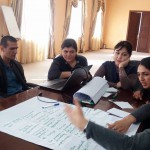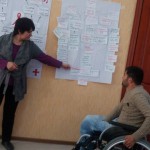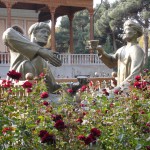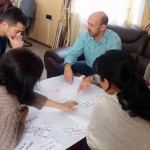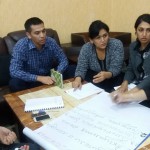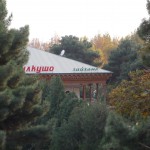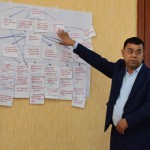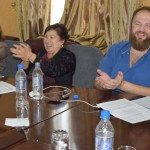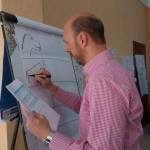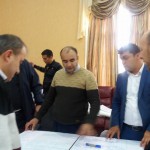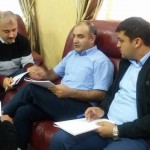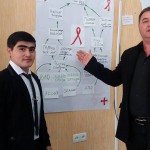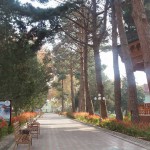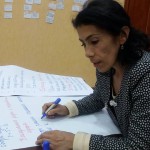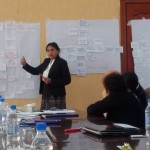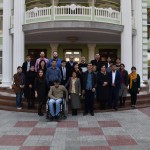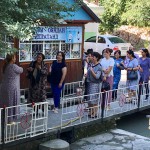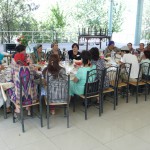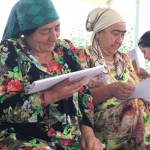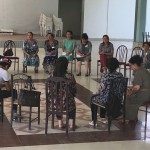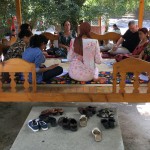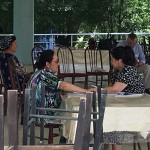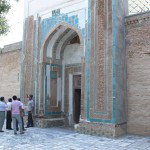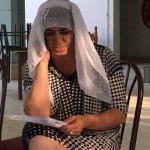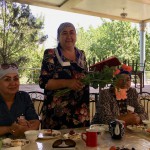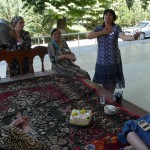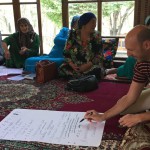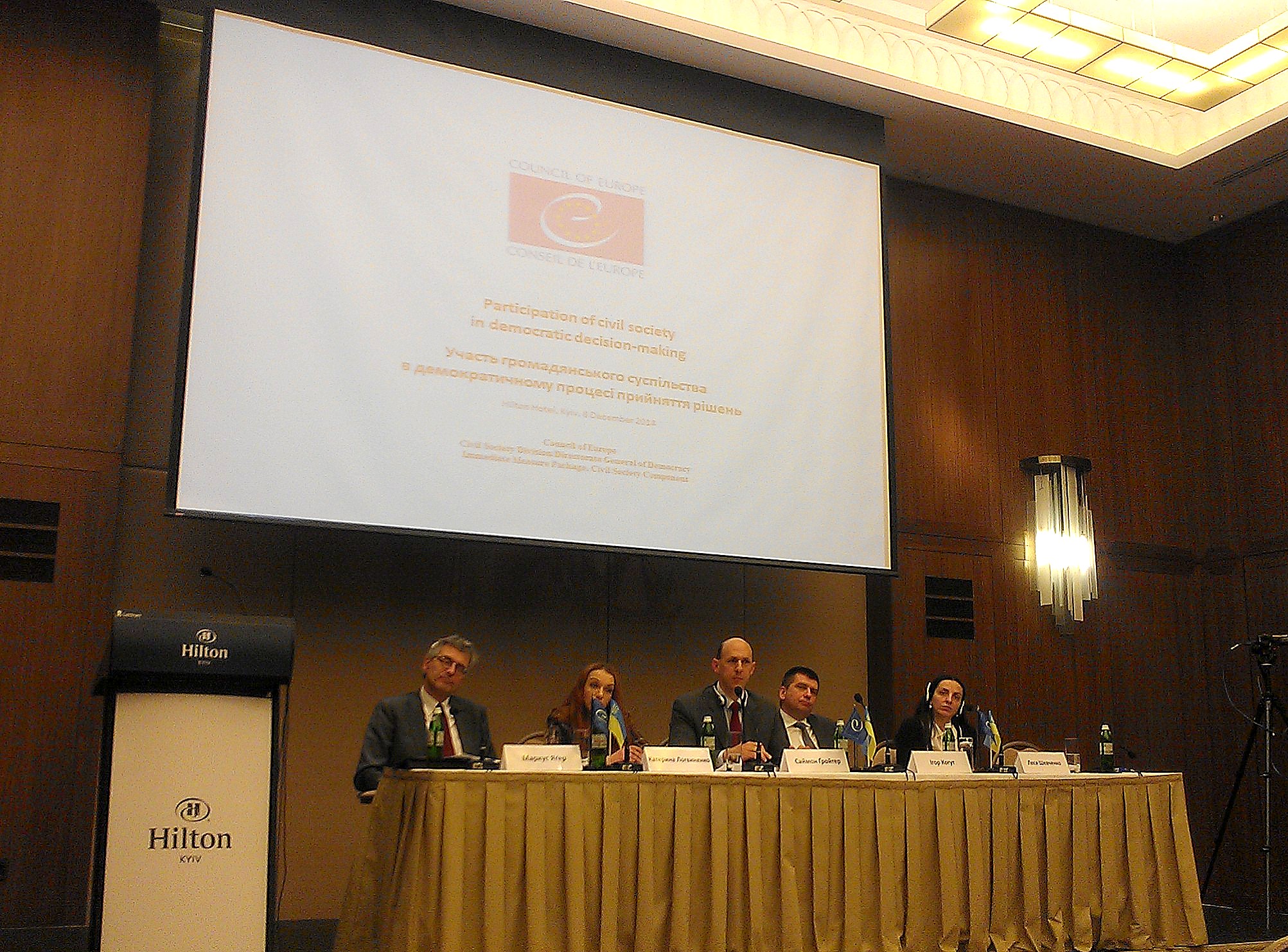As part of our project “Healing of broken Communities in Eastern Ukraine”, on 12 and 14 June 2018, agens introduced the “Integrative Community Therapy” method in two group sessions in Kyiv and Severodonetsk. Here some impressions from the session in Kyiv:
Category Archives: Allgemein
Conflict, trauma and healing in Eastern Ukraine
In March/April 2018, agens with its Ukrainian partners conducted a survey on “Conflict, trauma and healing in Eastern Ukraine”. A series of face-to-face interviews were conducted with residents of Lysychansk, Severodonetsk and Scastje, and other locations of Luhansk Oblast including ORLO. Complementary, an online survey was conducted within the Ukrainian dialogue community, including residents of ORDO.
Download the survey results in English: Presentation English
Download the additional slides: Additional slides English
Download the combined extended version: Extended version English
Tajikistan: Project design course for NGO leaders conducted
25 leaders of small and medium NGOs of Tajikistan active in the fields of social inclusion, health, environment, human rights and local economic development took part in the training on “Analysing social issues, project design and financing” in Khujand/Bahoriston from 6 – 10 November 2017. Participants – women and men from all regions of the country – included two persons with disability and many representatives of newly registered organizations. During the training, participants clarified their target groups and reflected on their talents and motivation. In five groups of similar interest, five different projects were elaborated jointly with community representatives. Main emphasis of the course was on problem and objective analysis leading to the logical intervention framework structure (logframe). Also, participants were introduced to cross-cutting issues such as gender and conflict sensitivity, and they exchanged views and experiences on sustainability. Different models of financing and self-financing were compared and information on potential sources shared. Finally, a set of recommendations to the international community on how to strengthen partnerships for development were assembled, essentially inviting donors to harmonize terminology, reduce language barriers and enhance simplicity, transparency and coordination.
Training on Integrative Community Therapy, 10 – 14 July 2017, Penjikent/Tajikistan
Embracing the bitter reality in Eastern Ukraine
At the very moment when in Aleppo, men, women, and children are massacred by government troops, the war in the Ukrainian Donbas(s)[1] region continues. Unbelievable suffering by the civilian population and an overriding proportion of civilian victims are some of the sad parallels between the Syrian and Ukrainian conflicts. Another one is the role of other states in supporting the warring parties, and the failure of the international community to effectively prevent the bloodshed. In terms of the role of the Russian government, the current tragedy in Aleppo illustrates like nothing else its cynical practice to speak of one thing and do another. The Kremlin does its utmost to confound the attention of the international community from its geopolitical interventionism with the pretence of diplomacy. Simultaneously the international community is responsible for letting playing along with the game staged in the halls of New York, Brussels, or Geneva.
What does that mean in the context of Ukraine? On 5 September 2014, after extensive negotiations in Minsk, the representatives of Ukraine, Russia, and the self-declared „Donetsk People’s Republic“ (DPR) and „Lugansk People’s Republic“ (LPR), under the auspices of the OSCE, signed the Minsk protocol. Aside from ten further steps the protocol foresees an immediate ceasefire and the withdrawal of armed groups and military equipment from Ukraine. In spite of temporary positive signs visible on both sides, none of these essential conditions for peace have been realized up to date.
Nevertheless, both Moscow and Kyiv officially continue to emphasize that „there is no alternative to the Minsk agreements“. Why so? Not because they genuinely believe in the spirit and the substance of the accord concluded, but to please the international community, to provide to the outside world a picture of good will, and to keep on communicating. The conflicting parties keep up pretences of searching for a mutual solution, while on the ground contradictory facts are being made.
On 11 February 2015 in Minsk, the conflict parties concluded a second agreement called „package of measures“ to revive the 2014 protocol and end the war in Donbas(s). Measure 9 of the package foresees the restoration of the Ukrainian state border – as prior to the conflict (following local elections and a change of Constitution establishing a „special status of particular districts of Donetsk and Lugansk oblasts“). This means, in principle, that the ultimate goal of the Minsk agreements is the restoration of the „status quo ante“ in East Ukraine. This article considers that this goal is unrealistic and that letting go of the idea of re-integration of the self-declared republics into Ukraine is a necessary first step towards lasting peace in the region.
People in Donbas(s) are tired of war, but after two and a half years of military and economic blockade of the self-declared republics by Ukraine, the option of reuniting has withered away. A new de-facto border has been established. Today, there is merely one crossing point for pedestrians in Lugansk oblast, and four crossing points for cars and pedestrians in Donetsk oblast. People wanting to pass from one side to the other have to wait for hours or even days in the queues and bribe the soldiers at the checkpoints. In spite of attempts by Ukrainian authorities to simplify the procedure, controls have become more rigorous in recent months.

Map of Donbas(s) region.
In the cities and towns of DPR and LPR away from the front line, life is taking place with certain day-to-day normality. Shops and restaurants are open, people go to work, and children visit school. But in the „grey zone“ along the 500 km long front line, shelling, fighting, and survival in basements continues. On both sides of the war there are a huge number of combatants and civilians who continue to suffer from severe trauma, and appropriate treatment and support systems to address these traumata are basically inexistent.
During the past months and years, Russia strengthened its control over many aspects of life within the self-declared republics. The Ruble has replaced the Ukrainian Grivna as the sole currency in DPR and LPR. The time zone in the area has been changed from Kyiv (GMT+2) to Moscow (GMT+3) time. As ZDF and Die Zeit reported in September 2016, a data leak within the DPR administration revealed further evidence for a strict line of command from the Kremlin to the leaders of the self-declared republics. According to Ukraine Analysen[2], in October, field commander Arseni Pawlow, well-know as “Motorola”, was killed by an explosion in his apartment block in Donetsk. The murder comes in a series of unresolved deaths of former rebel commanders, who had enjoyed a high level of recognition and independence in the self-declared republics.
In the rest of Ukraine, people have little understanding for the suffering of those trapped in the limbo between Ukraine and the Russian Federation. As a recent study of the Rahmonov Centre[3] highlights, people’s positions towards the rebels are tougher, for instance regarding the question of amnesty, the further they live from the front lines. A good indicator for shifting attitudes in Ukraine is the attitude of local populations towards internally displaced peoples (IDP). While in the beginning of the conflict, IDPs from Donbas(s) were mostly welcomed in the rest of Ukraine, they now often face prejudices and open discrimination. For instance, being from Donetsk can be a sufficient reason for refusal when applying for an apartment in Kyiv or booking a holiday room in Odessa.
The regional circumstances combined with debates in the Verkhovna Rada[4] show that many Ukrainians, or at least the publicly noticeable parts of the political elite, have mentally already given up on Donbas(s). According to an adviser close to Ukraine’s Presidential Administration, the post-Maidan Ukrainian government has actually made a conscious choice to give up the parts of the country, which would obstruct reforms and a Western-oriented course of development. Some Ukrainian opinion leaders compare Donbas(s) with “rotten meat” or “a cancer” that needs to be cut off.
This brings us to the underlying issues of identity and self-identity which represent some of the key root causes of the conflict in Eastern Ukraine. According to Von Bruno De Cordier, University of Gent, identification with the Soviet heritage as well as the Great Patriotic War (Second World War) and anti-fascism are two of six aspects of self-identity of the people in Donbas(s). Ukraine, on the other hand, in an attempt to cut clear from its past as one of the leading republics of the Soviet Union, officially defines itself “negatively” as “not Soviet” and “not Russian”. In the so-called “De-communization laws”, the Communist and the National-Socialist regimes are equally condemned as totalitarian, and the fighters for Ukrainian independence in the 20th century – the groups around nationalist leader Stepan Bandera – are glorified in spite of their collaboration with the Nazis in the massacre of 60’000 Poles in Western Ukraine.
The anti-Soviet self-definition and the use of historic figures for identity building express the current lack of an integrative national vision that is inclusive for all Ukrainian citizens. In combination with the existing lack of opportunities for economic and political participation, it is not surprising that many people in Donbas(s) feel better supported by Russia than by the political elite in Kyiv.
It can be concluded that currently there is no space for political rapprochement in Kyiv or in the self-declared republics “DPR” and “LPR”. Only a handful of people are actively working towards this end and their efforts lack public recognition and support, including from the international community. Thus, the full re-integration of the self-declared republics of Donbas(s) into Ukraine is not a realistic option for the future. But accepting the present situation, giving up resistance to what is and embracing the reality does not mean one cannot do anything about it. In contrary, it might open up minds and hearts and re-orient attitudes towards greater inclusiveness. In the long term this may lead to normalization of social relations and eventually peace in the region.
—————————–
[1] The writing „Donbas(s)“ is chosen to demonstrate impartiality between the Ukrainian („Donbas“) and Russian („Donbass“) versions.
[2] Ukraine Analysen is a joint initiative of several Eastern Europe research institutions in Germany.
[3] The Rahmonov Centre is a Kyiv based think tank.
[4] Ukrainian Parliament.
Eastern Ukraine: living with war trauma
According to official figures, more than 10’000 people have already lost their lives in the war which is ongoing in the East of Ukraine since spring 2014. 22’000 were injured. Most of the victims are civilians who got caught in heavy shelling along the 500 km long front line between the Ukrainian army and the self-declared republics “DPR” and “LPR”.
Ukraine is the largest country in Europe with 45 million inhabitants. 3,8 million live in the self-declared republics today. There are 1,5 million internally displaced and 1 million refugees mostly to Russia or Belarus. People in the conflict zone, displaced and refugees, former combatants and their relatives – they all feel the cosequences of the war. Many suffer from post-traumatic stress disorder.
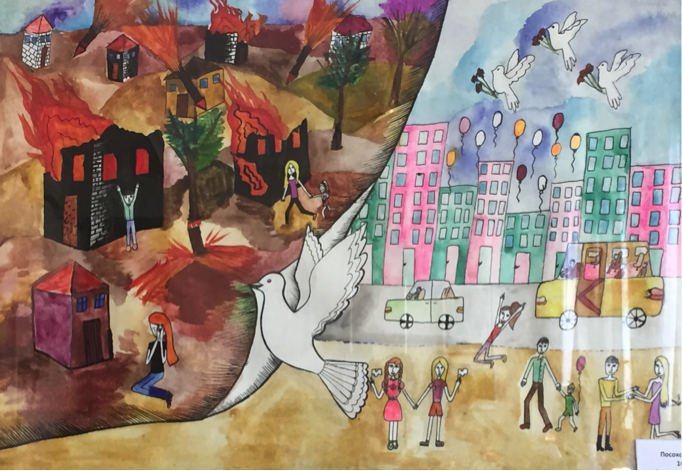 “Turning the pages of history”, Irina Posokhova, 16, Donetsk
“Turning the pages of history”, Irina Posokhova, 16, Donetsk
Exchange with Vladimir Soroka, psychiatrist from Donetsk in Switzerland
On 18 and 24 May 2016, two public exchanges with Vladimir Soroka from Donetsk, Ukraine, took place in Berne and Lucerne, Switzerland. Vladimir is a psychiatrist who works with victims on both sides of the conflict which is ongoing in the East of the Ukraine since spring 2014. His presentation focused on the life of people trapped between the two warring parties and entailed many illustrative examples from his work with traumatized patients in Donetsk and Kiev.
While having a neutral role as a doctor committed to principles of humanity, he is also personally affected by the war and has witnessed its course since the beginning. High prices for food and the impossibility of employment in the public hospital in Donetsk force him to shuttle between Donetsk and Kiev, spending most of his time away from his family.
Initially, the checkpoints at the frontline could be passed rather easily, but this has now become an endeavour of many hours or days. Many people spend the night in the queue in order to be able to make in through. There are usually no toilets, and the terrain left and right of the asphalt road is often mined.
In the territories of the self-declared republics “DPR” and “LPR”, civilians live in a sort of “prison under open sky”. Especially affected are pensioners and children. Many elderly feel isolated because their relatives have left the area. Pensions are very small or non-existent. The suicide rate among pensioners is high. Many children who have witnessed death directly or indirectly are affected by post-traumatic stress disorder, showing symptoms such as bedwetting, sleepwalking or nervous tics.
Even though there is an enormous willingness of relatives and friends in other parts of Ukraine to help, internally displaced persons (IDPs) often face difficulties with their integration at the new place. Finding a place for living, work and social acceptance are only some of their challenges. For this reason, in spite of facing the risk of being named “traitors” in Ukraine, many prefer to return to Donetsk after some time. There, they are often not welcome back, too, but blamed not to have stayed in solidarity “during the difficult period”.
There are many professional psychologists in Ukraine, ready to provide psychological support to people with trauma even on a voluntary basis, but they lack support, coordination and training. Hardly anyone has undergone specialized education in trauma therapy. It may happen that, during a therapy session, the therapist breaks out in tears together with the patient, both ending up in need of assistance.
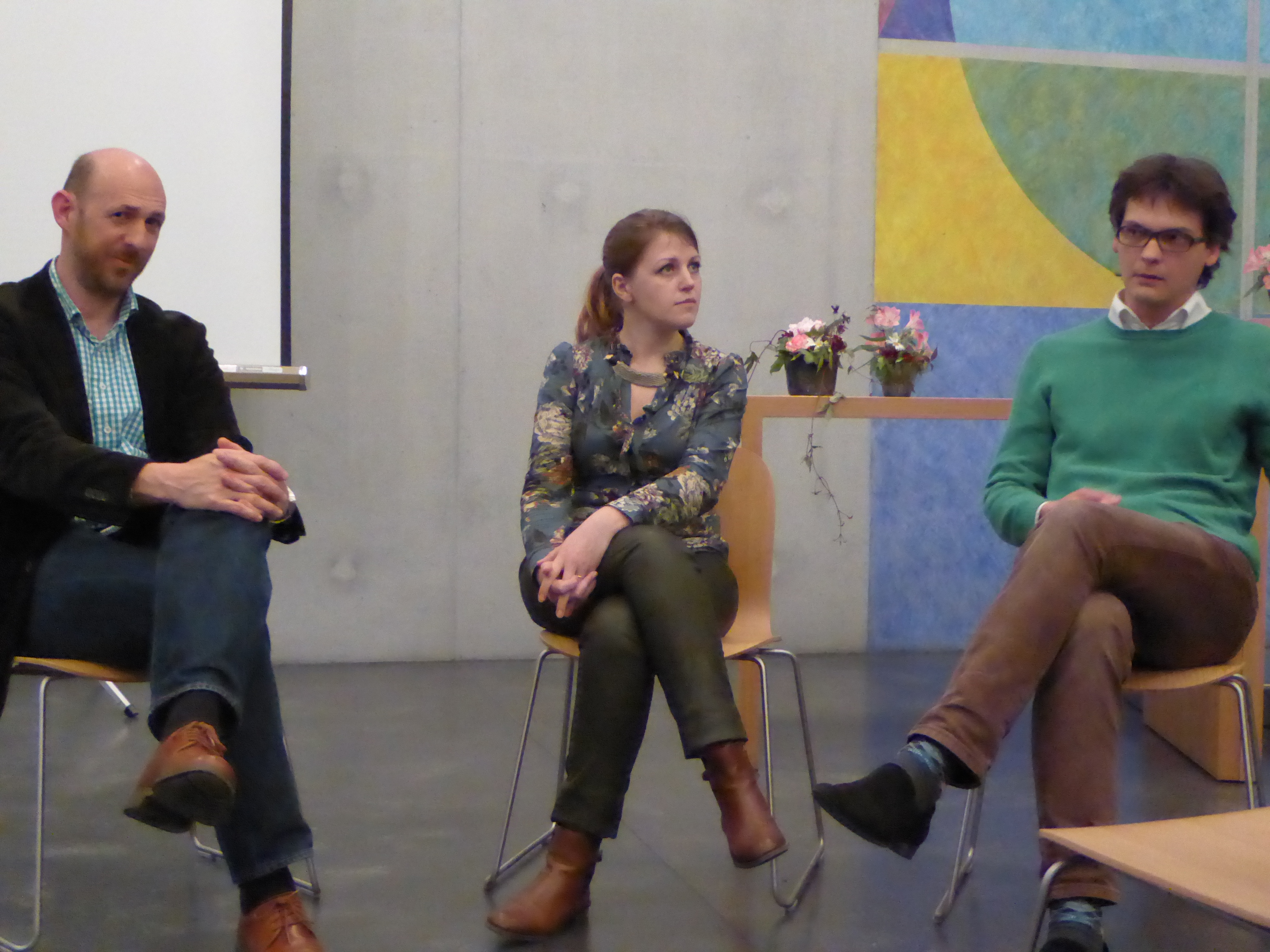 Vladimir Soroka (r), Nadja Schär (translation) and Simon Greuter
Vladimir Soroka (r), Nadja Schär (translation) and Simon Greuter
at the exchange in Adligenswil/Lucerne.
Outlook on the peace process
People in Ukraine know little about the official peace process taking place in Belarusian capital Minsk. There, under to auspices of the OSCE, in September 2014 and February 2015, a comprehensive peace agreement was concluded and signed by the official representatives of Ukraine, Russia, DPR and LPR. The ceasefire in place today is generally recognized as a result of these negotiations. But besides that, not much visible has come out from the bi-weekly meetings of the four working groups yet. In contrary, the Minsk process has lead to the politization of issues such as the exchange of prisoners which were before handled more effectively on technical level.
Even though many don’t believe that elections will lead to substantial change in Eastern Ukraine under the current circumstances, the main emphasis of the international efforts are currently directed to the preparation of municipal elections. On the other side, not enough – national and international – attention is curently paid to the questions of demobilization and amnesty. In combination with serious economic reintegration opportunities, the perspective of a real amnesty in Donbas(s), however, could help fighters to decide to quit arms and thus build the basis for reconciliation and sustainable peace in the region.
Ukraine: Strategic priorities for civil participation in decision-making endorsed
At a high-level-roundtable organized by the Council of Europe on 8 December 2014 in Kiev, representatives of the Ukrainian government and civil society discussed the enhanced version of a strategy document following consultation with key civil society and government actors. Representatives of the Presidential Administration, the Verkhovna Rada (Parliament), the Cabinet of Ministers and the Ministry of Justice were among the panelists from official side. Civil society was represented by the Euromaidan and the Reanimation Reform movements, among others. The roundtable was preceded by a multi-stakeholder meeting on 5 December which looked at the outcomes of the written consultation process and brought the views of the various involved stakeholder groups into the discussion.
The strategic priorities are structured in three parts: (a) Creating an enabling legal environment, (b) Institutionalizing consultation, dialogue and consultation, and (c) Building a culture of participation. Part (c) includes awareness raising as well as capacity building of both the public administration and civil society organizations. Participants of the 8 December roundtable widely endorsed the proposed strategy. Contradictory statements were made regarding the role of NGOs in strengthening local self-government, e-democracy tools and the link of possible future civil participation regulation to regulatory policy law. There was broad recognition of the fact that actors and activities need to be further specified when it comes to the implementation of the strategic priorities. The creation of a multi-stakeholder task force to facilitate problem solving was proposed in this regard.
“Things are changing,” said two of the civil society participants independently from each other. “Only one year ago, it would not have been possible that we sit at a table with government representatives and talk openly about needs and ways to enhance mutual communication and consultation. That we work together in order to improve the quality of political decisions of our country. Today, this is a reality”. The full strategic priority document in English can be found here, in Ukrainian here. The Council of Europe’s review of the roundtable is posted on the website of it’s office in Ukraine.


